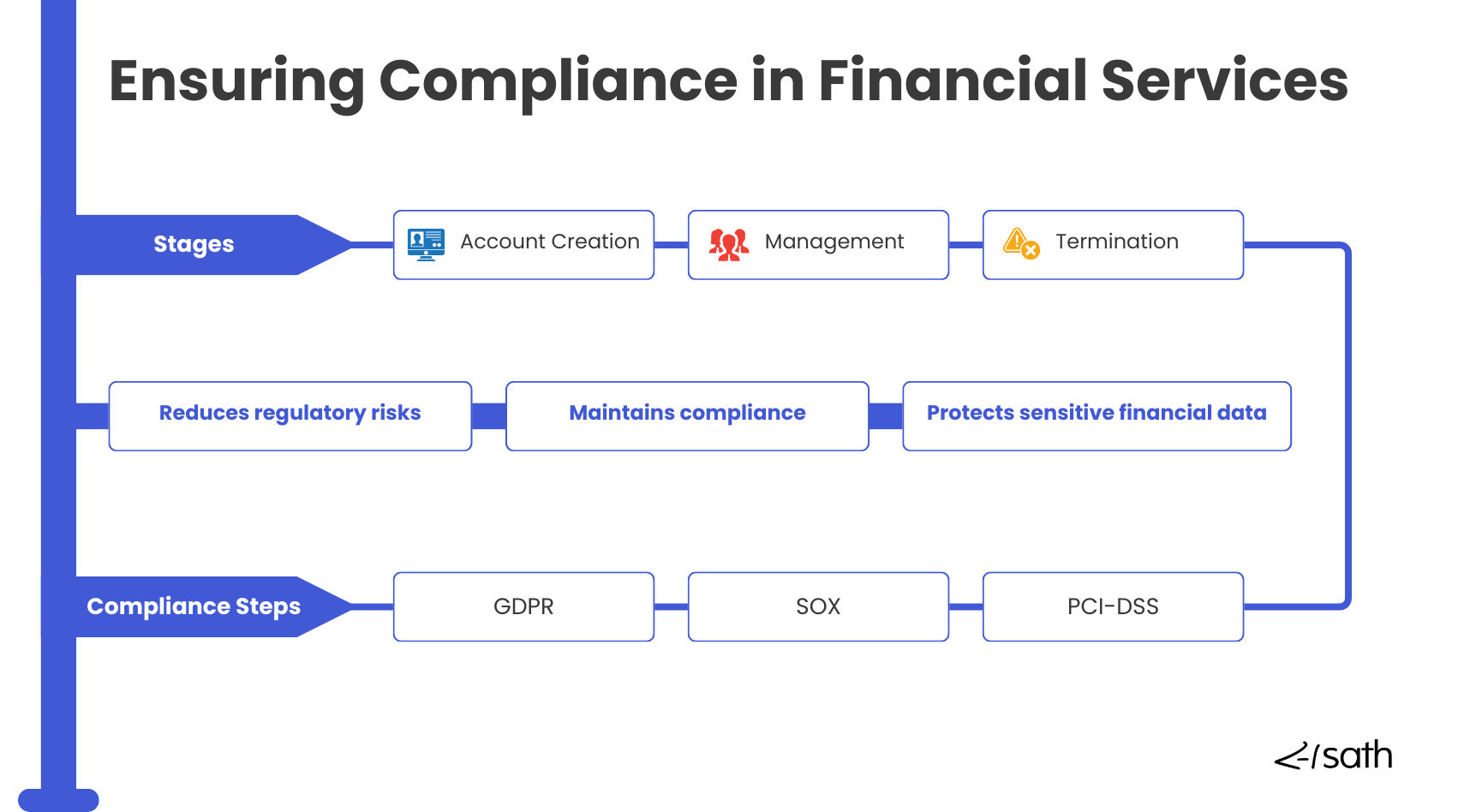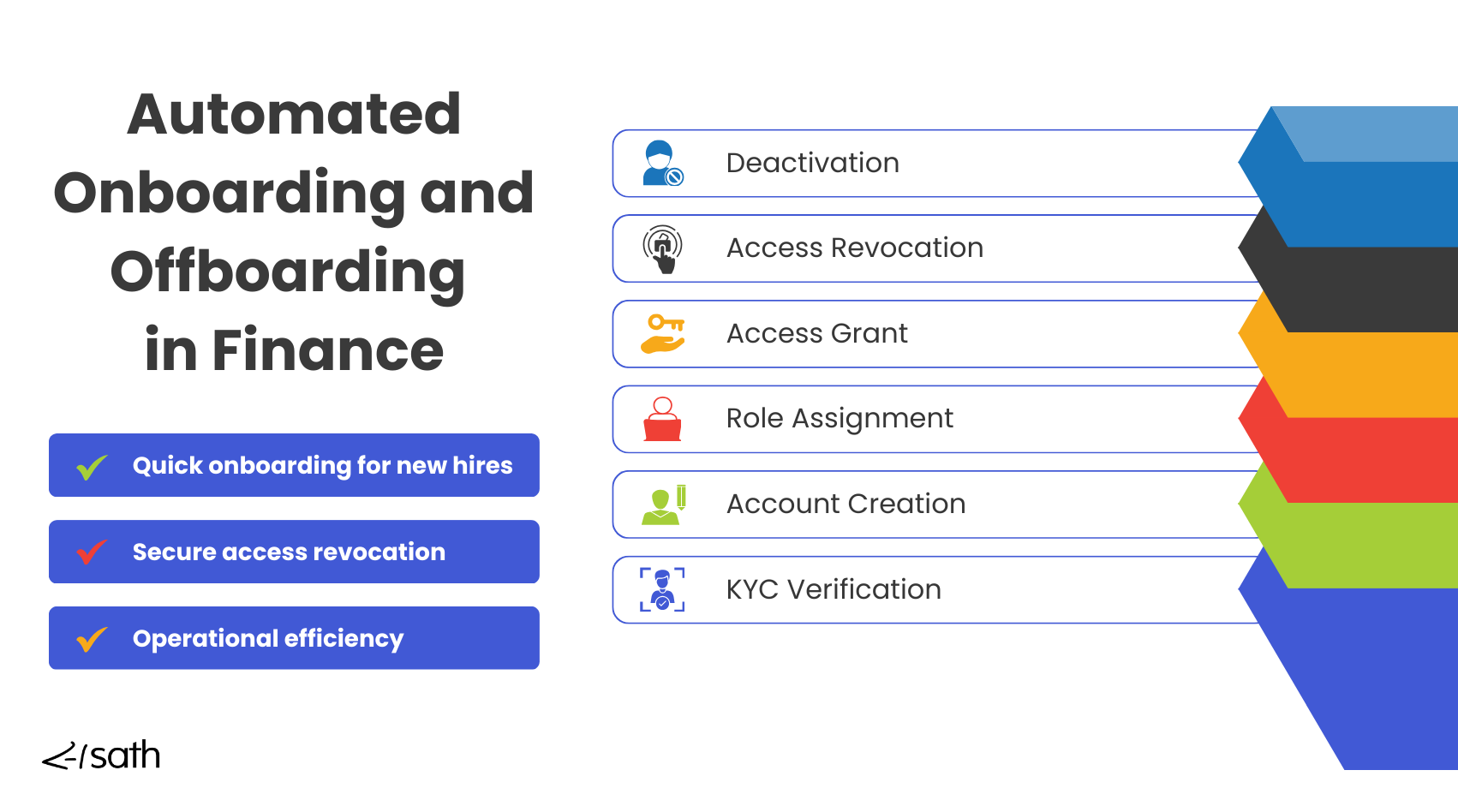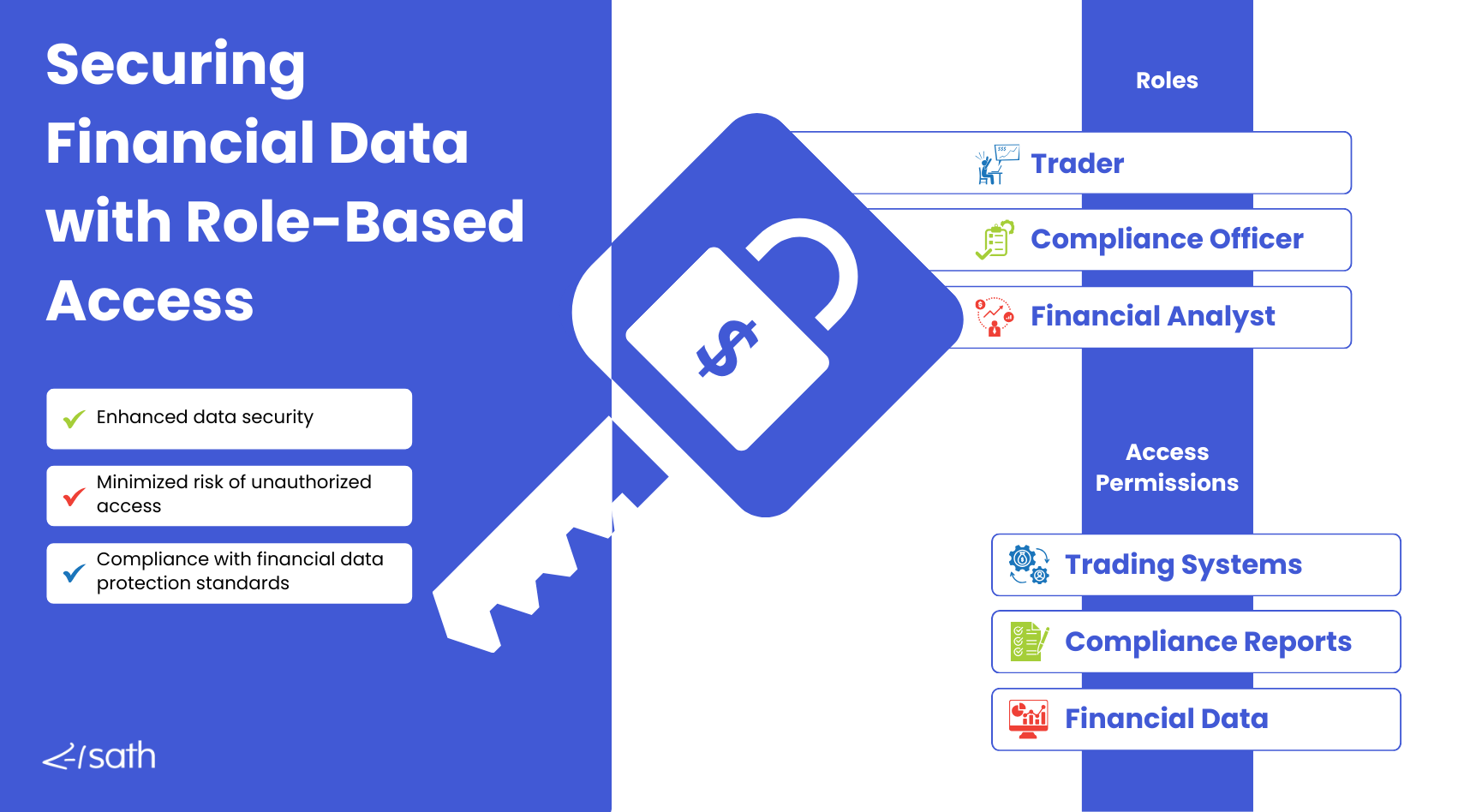
What alarming vulnerabilities expose nearly 11 million files in financial institutions?
According to the 2021 Financial Data Risk Report, financial institutions face significant security threats, with 50% reporting data breaches in the past few years. The report emphasizes the heightened risks from remote work and cloud storage, which can lead to increased unauthorized access to sensitive information.
To address these challenges, the report advocates for proactive data security measures, including advanced monitoring systems like Identity and Access Management (IAM) for financial institutions, regular security audits, and comprehensive employee training.
In this post, you'll discover how IDHub can help your financial institution tackle common identity management issues from regulatory compliance, to efficient onboarding, seamless system integration, enhanced security, and reduced administrative overhead.

Challenge #1 Meeting Financial Regulations
Financial institutions must stay on top of a range of finance compliance regulations, such as GDPR, SOX, and PCI-DSS. These rules require tight access controls and detailed user account management, and the constant updates and changes to these regulations can be overwhelming. Maintaining a high level of security is necessary to protect sensitive customer information and transactional data.
For IT teams, this means maintaining detailed records of who has access to what and when they accessed it. This level of tracking is critical for audits and compliance checks.
Manually managing this can be challenging and lead to errors and gaps in compliance. Financial institutions need a reliable solution to handle these demands efficiently, reducing the burden on IT staff while ensuring that the institution remains compliant and secure.
How IDHub Helps
IDHub makes this easier by offering full visibility and control over user accounts throughout their entire User Lifecycle. From when an account is created to when it's no longer needed, IDHub helps you manage every step smoothly and efficiently.
Using IDHub’s Identity Lifecycle Management means you can effortlessly meet regulatory requirements. This feature ensures your access controls are always up-to-date, protecting sensitive financial data and keeping you in line with GDPR, SOX, and PCI-DSS. It’s a straightforward way to enhance security and compliance without hassle.

Challenge #2 Employee Onboarding and Offboarding
Onboarding and offboarding employees efficiently is a constant challenge. New hires need immediate access to various financial systems, while those leaving must have access promptly revoked to maintain security. Delays or errors in these processes can disrupt daily operations and create security vulnerabilities. For IT teams, each new hire or departure means manually updating access permissions across multiple systems, which is time-consuming and prone to mistakes.
The complexity increases with the frequent addition of temporary staff and contractors who require precise access for limited periods. Manually managing these changes adds a heavy administrative burden on IT teams, often pulling them away from more strategic projects.
Automating these processes can alleviate this workload, ensuring new employees have the access they need right away and that former employees are promptly removed from the system.
How IDHub Helps
IDHub simplifies these processes by for the entire User Lifecycle by automating user account creation, activation, and deactivation. This means new employees immediately have access to what they need, and those leaving have their access promptly revoked, all without manual intervention.
With IDHub’s automated system, onboarding becomes a breeze, reducing delays and ensuring new hires can start contributing immediately with automated provisioning to the accounts they need. Similarly, when staff leave, their access is quickly and securely revoked, maintaining security and operational efficiency. This automation helps your IT team focus on more critical tasks while keeping the organization secure and efficient.

Download our free info-graphic here - How To Master IAM for Finance
Challenge #3 Managing Multiple Applications
Financial institutions often rely on numerous applications and platforms to handle complex operations. Each system requires specific access controls, which makes managing seamless access a daunting task.
IT teams must constantly update and manage permissions for various applications, ensuring employees have the correct access while preventing unauthorized entry. This task becomes even more challenging as the number of applications grows, each with unique requirements and integration complexities.
A unified access management solution is necessary for IT teams to handle multiple systems, leading to inefficiencies and increased potential for errors. Manually handling these tasks can consume significant time and resources, diverting attention from more strategic initiatives.
An effective access management solution is necessary to streamline this process, reduce the administrative burden, and ensure that employees have the right access to perform their roles efficiently. This solution would help IT teams maintain a secure and efficient environment, allowing them to focus on driving innovation within the institution.
How IDHub Helps
IDHub simplifies this task by integrating with systems like Microsoft Entra ID (formerly Azure AD) and other applications. to automate user account provisioning and de-provisioning. This means you can manage access across multiple financial applications without the hassle of manually juggling different platforms.
IDHub’s connector integration makes access management efficient and consistent across all your financial applications. This reduces the complexity of handling multiple systems and enhances operational efficiency, ensuring everyone has the access they need when needed. It’s a straightforward way to keep your operations running smoothly and securely.

Challenge #4 Safeguarding Sensitive Financial Information
Financial institutions handle large volumes of confidential data, including customer details, transaction records, and proprietary business information. The stakes are high, as data breaches can lead to significant financial losses, legal issues, and reputational damage. Therefore, controlling who can access this sensitive information is crucial.
For IT teams, this means setting up and managing strict access controls. They must define permissions based on roles, departments, and specific responsibilities, ensuring that users only access the information necessary for their job.
This can be complex and time-consuming, especially in large organizations with many employees and contractors. Automating these processes can significantly reduce the workload, allowing IT teams to focus on other important tasks while maintaining a secure environment.
How IDHub Helps
IDHub makes this task manageable by assigning access permissions based on user roles. Whether by job function, department, or location, users only get access to the resources they need for their specific role.
Using Role-based Access Control (RBAC) through IDHub helps minimize security risks by ensuring users only access what’s relevant to their roles. This targeted approach enhances data protection and helps with compliance. It’s a smart way to secure sensitive financial information and ensure that your organization always follows best practices.
Challenge #5 Easing the IT Workload
For IT staff in financial institutions, manually provisioning user accounts is a significant burden. The constant need to set up and manage access for many employees, especially with the frequent onboarding of temporary staff and contractors, leads to a heavy administrative workload.
Each new hire or role change requires precise adjustments to access permissions across various systems, consuming valuable time and resources. This repetitive and labor-intensive task can detract from more strategic IT initiatives and impact overall productivity.
The manual management of user accounts also increases the risk of errors, such as granting incorrect access levels or failing to revoke permissions for departing employees. These mistakes can compromise security and regulatory compliance, posing significant risks to the institution.
Automating the provisioning process can significantly alleviate these challenges, allowing IT teams to efficiently handle user accounts with accuracy and consistency.
How IDHub Helps
IDHub lightens the load by automating the provisioning process and offering temporary access for specific periods. This means that user accounts can be created, activated, and deactivated automatically, and temporary staff can get just-in-time access that expires when no longer needed.
IDHub significantly reduces IT staff's manual workload, allowing them to focus on more important tasks. This automation boosts efficiency and ensures timely access control, particularly for temporary staff and contractors. It helps optimize resource management and maintain a secure environment, keeping everything running smoothly and securely.
Conclusion
We've explored how IDHub addresses key identity management challenges in the financial sector, including regulatory compliance, efficient staff onboarding, seamless system integration, role-based access control, ongoing compliance, clear reporting, and administrative efficiency. Adopting IDHub can transform how your financial institution manages identity and access, reducing the burden on IT staff and enhancing overall security and compliance. Continue Part 3 of this finance series: How IAM Access Reviews & Reporting Help with Banking Compliance
Download our free info-graphic here - How To Master IAM for Finance
